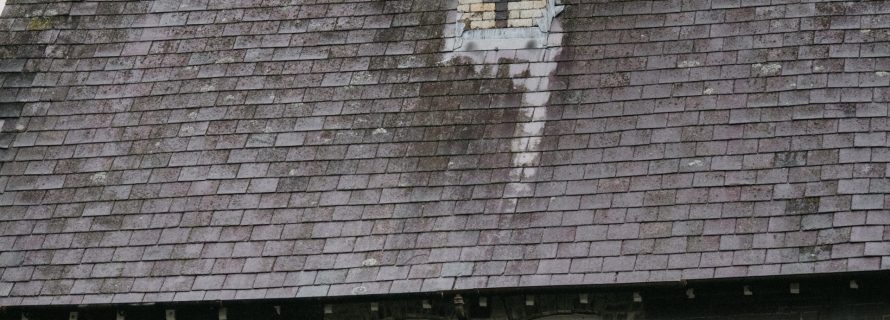Common Roof Problems You Need To Deal With

Since most people consider roof problems as a significant expense, they often rank high in many homeowner’s home maintenance checklists. This is especially true since you need to work with roofing contractors with complete licenses and roofers insurance.
Unfortunately, roof problems are often considered inevitable as the roof ages. To help ensure you can fix minor roof problems before they become financial catastrophes, be on the lookout for some of the widespread roof problems you’ll likely encounter:
Leaks
Regardless of the type of roof you have, if there are leaks, then you have a problem. Leaks can be attributed to several causes. For instance, leaks can occur due to flashing details that were not fastened properly during installation.
Leaks can also occur when the proper moisture barrier is not installed underneath the coping cap on parapet walls. Under-application of adhesive can also cause poor lamination and roof leaks.
Blistering
Roof ridging, splitting, surface erosion, and blistering often lead to more significant problems when left unattended. While blisters are usually not fixed, it has to be addressed when of substantial size.
Many factors can cause blistering, including inadequate attachment of hot bituminous roof systems, felts slipping, and accelerated aging. Dry laps and bad interply integrity can also cause blisters to appear.
Air and moisture that is trapped in modified bitumen roofs can also vaporize and cause blistering. Most times, blistering won’t cause substantial damage. However, it needs to be repaired once it affects the lap area.
Worn or Damaged Flashing
Metal flashings are built to withstand degradation. But they’re also not designed to last forever. If your roof has been around a few decades or has been subjected to some harsh elements, you should check if your flashing needs to be replaced or repaired.
Tree Branches
Even if you are vigilant about tearing down leaning trees or cutting the branches that make their way to your roof, high-speed winds can still make your roof vulnerable to damage. Extra pressure caused by fallen tree limbs or branches may also cause your roof to sag.
Ponding Water
Another prevalent issue homeowners face regardless of roof type is ‘incidental ponding water.’ For instance, when a dead-level roof is designed, slope is typically added with tapered crickets or installation to avoid ponding water.
Before scheduling any roof repairs, it is recommended that the source of the ponding water should be investigated. In some instances, HVAC units that have no condensate drain lines are the culprit.
It is ideal to have everything inspected thoroughly before making any repairs. It is also recommended that you check drains to ensure they are dirt, silt, and debris free.
Damaged/Blown-Off Shingles
Depending on your roof’s configuration, you can lose some shingles before you even notice it. However, having damaged or lifted shingles due to extreme weather is also very common.
High winds can pry the tiles and metal flashings up, destabilize the roof, and potentially invite water and pests in. Too much sun might also cause cracking and breakage over time.
Failing Granules
Asphalt shingles are built with tiny particles that are designed to absorb the sun’s harmful UV rays. Once they begin to fall off, however, it will cause bald patches on the roof. If you notice your roof has swaths of discoloration, it can be a sign you’re losing all those granules.
Splitting
While the roof can seem like a static component of your home, it also shifts and changes. For instance, shingles can expand in some roofs as soon as the weather starts to warm up, which ultimately results in splitting. If the shingles bump into each other continuously, it can warp the roof entirely.
Damaged Gutters
If there’s substantial damage to your gutters or downspouts, your roof might suffer as a result. Damaged gutters might cause water to get into your home or soak your lawn in all the wrong places.
For most downspouts and gutters, it’s all a matter of unclogging and reattaching them. However, others need to be replaced entirely before they can cause substantial damage.
Conclusion
Your roof covers and protects one of the most significant assets you own, so it pays to know signs of trouble so you can address them early. Fortunately, most red flags are easy to see, and you can even spot them from the ground.
However, a tiny leak can go undetected for years and can cause damage before you even notice anything. That said, it is recommended that you inspect your roof on a routine basis.
Fortunately, some contractors offer free inspections. However, even if you have to pay for the inspection, consider it money well spent as you can fix roof problems early before they require costly repairs.
About the Author: Rachel Porter is the content specialist for Custom Contractors Insurance, LLC, an Arizona roofing and contractors insurance company. When not writing, she enjoys reading and mountain biking with her friends.
Photo by Annie Spratt on Unsplash
- Additions and New Construction
- All Exteriors
- Alterations
- Basements
- Bathrooms
- Customer Service
- Customer Stories
- Decks
- Design & Planning Show
- DIY
- Doors
- Educational Resources
- Extreme Makeover Home Edition
- Fashion Show
- General Remodeling
- Green Living
- Handyman Home Services
- Home Decor
- Home Entertainment
- Home Improvement
- Home Improvements
- How to Tips
- In The Community
- Kitchens
- Off-the-Wall Remodeling Stories
- Remodeling
- Resources
- Roofing
- Siding
- Social Media
- Sunrooms
- Tips & Tricks
- Trends
- Windows

